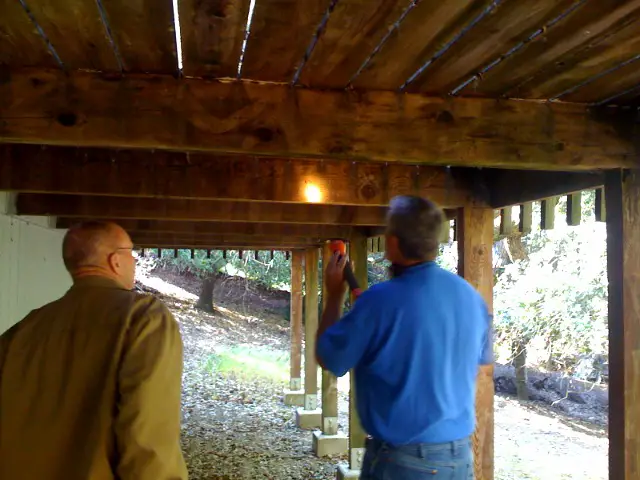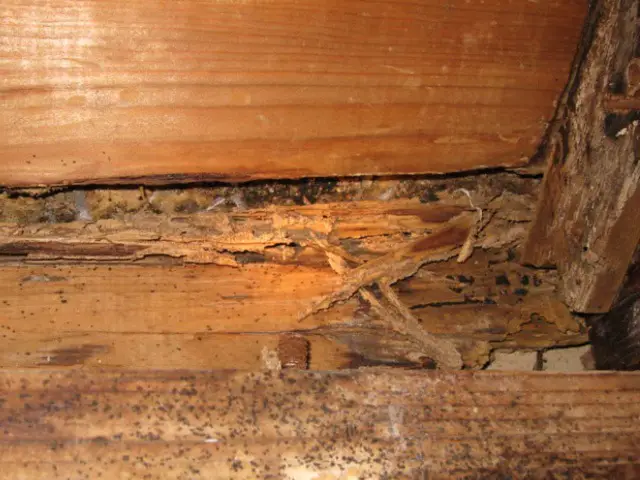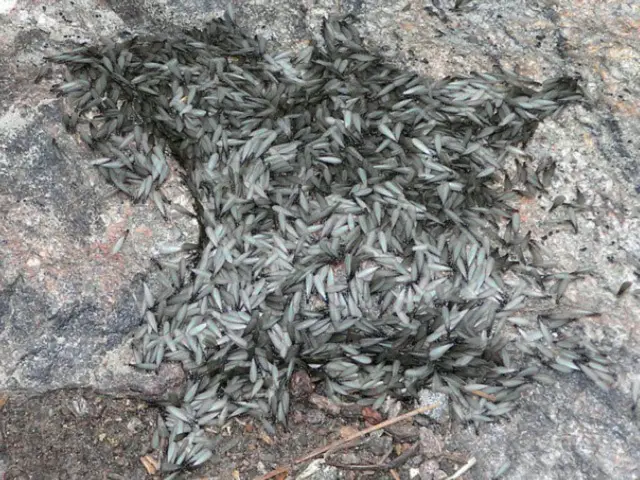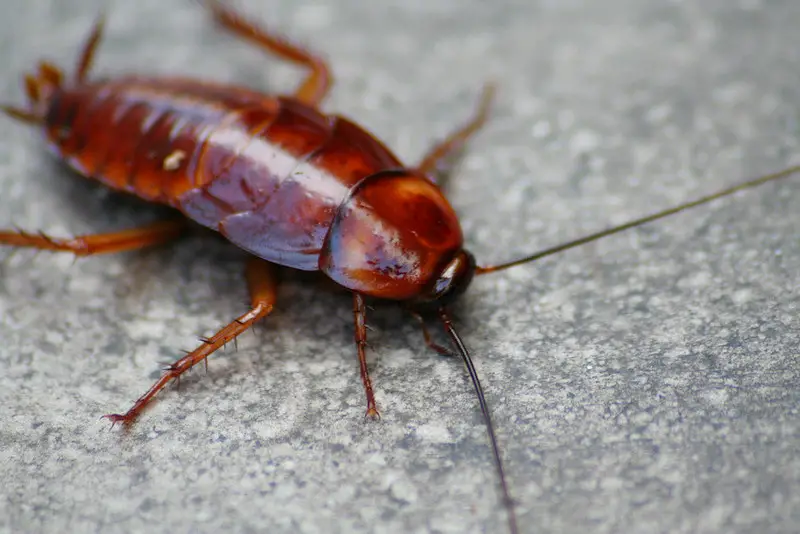Why are termites so harmful?
Termites are harmful because they destroy the wood structure of homes. Termites live in colonies that, at maturity, are numbered from several hundred to several million individuals. Colonies use decentralized, self-organized systems of activity guided by swarm intelligence to exploit food sources and environments that could not be available to any single insect acting alone. They have the highest level of social organization in a hierarchical classification.
Are swarming termites harmful?
Swarming termites aren’t harmful or dangerous. Swarmers are a nuisance, but they aren’t particularly harmful. Swarming termites don’t cause structural damage. The termite damage is caused by the worker termites of a colony.
Termites are sometimes called “white ants,” though they are not closely related to true ants. Termites mainly feed on dead plant material. They generally feed on wood, leaf litter, soil, or animal dung. About 10% of the estimated 4,000 species (about 2,600 taxonomically known) are economically significant as pests can cause severe structural damage to buildings and crops or plantation forests.
Related posts:
- Can You Get Rid Of Termites Without Tenting?
- What Are The Early Signs Of Termite Damage?
- How To Prevent Termites In Florida?
- What Does A Termite Nest Look Like?
- Is termite inspection required for an FHA loan?
- What Are Common Termites In Florida?
How do you check for termite damage?
Some termites live under the ground and some behind the walls. That’s the reason termite nests are hard to spot. Termite colonies are small. They are widely dispersed and can take a long time to mature, making it difficult to detect their presence until they put the property’s structural integrity at stake.
Suppose you see any of the following termite signs in your home. In that case, you should think about scheduling a termite inspection as soon as possible. What’s worse is that most insurance plans don’t cover termite damage.
How to detect termites in walls?
Holes and cavities in walls are a sure sign of termite damage. Wooden walls are especially susceptible to termite damage.
Common signs of termite damage to a wall:
- Mud colored trails – look for faint lines
- Hollow sound when you tap on the wall
- Winged insects emerging from woodpiles, walls
- Peeling or bubbling paint
- Crumbling baseboard
- Jammed windows and doors
- Wood-colored droppings
Are termites harmful to humans?
Termites aren’t particularly harmful to humans. These pests can sting and bite but aren’t immediately dangerous to your health. Termites don’t transmit or carry disease to humans, but some people might have an allergic reaction to termites. People have reported to be allergic to termite droppings and saliva.
Are termites harmful to dogs?
Termites aren’t directly harmful to dogs. The damage is done to the wood structure of your house, not your dog. Termites damage wood and cellulose materials in your home.
Are termites toxic to dogs?
Your dog getting an infection from termites in your house are small. But termites can create indirect health risks to your dog. For example, the chemicals used to treat a termite-infested home can be toxic to pets. Therefore, before your home is treated for termites, find out the potential health risks to your dog.
How can I get rid of termites?
One of the best ways to get rid of termites is to apply termite-killing products to your house’s exterior. For example, you can spray boric acid and set up termite baits in your walls and floors.
Depending on your home state, you may be able to buy some professional-grade termite-killing products. Then, apply the termite treatments to the exterior of your property. Thus, termite treatments create a barrier. And because termites cannot detect the termiticide, they won’t try to avoid it.
What is termiticide?
Termiticide is a pesticide used to prevent, control, and suppress termites. It spreads like a virus. One termite will carry it around and infect other termites like a virus.
Why cockroaches are harmful pests?
Cockroaches are harmful pests because they spread disease and contaminate our food. There are about 4,500 species of cockroach, of which 30 species are associated with human habitations, and about four species are well-known as pests. Some cockroaches have been known to live up to three months without food and a month without water. They prefer warm climates and are considered “cold intolerant” but are resilient enough to survive occasional freezing temperatures. This makes them difficult to eradicate once they have infested an area.
They feed on human and pet food and can leave an offensive odor. They can also passively transport microbes on their body surfaces, including potentially dangerous ones to humans.
Related posts:
- Signs Of A Cockroach Infestation
- Is termite inspection required for a VA loan?
- Can bleach kill roaches?
- Why do I only find dead cockroaches in my house?
- Do Mice Eat Cockroaches?
- American Cockroach vs. German Cockroach
What to do if you find a cockroach?
If you find a cockroach, dead or alive, in your house, it’s to inspect your home for more cockroaches. After inspection, you should be able to determine the extent of the level of cockroach infestation in your home. Once you know how bad the cockroach situation is, you can call a professional pest control company, spray pesticides, or set baits.
But what if I only find one cockroach?
Even one cockroach can start an infestation in your home. Chances are if you see one cockroach, there are many more inside the walls and under your home.
Why cockroaches are harmful pests in your house?
Even though cockroaches don’t bite, having them in your home is still bad. This is because cockroaches can cause health problems in humans. For example, in a cockroach-infested house, people can experience asthma and allergy symptoms.
How do you get rid of roaches?
If you think there is a cockroach infestation in your home, there is no need for panic. However, before you can get rid of cockroaches, you need to locate active hiding places. Warm areas with easy water access make for the best cockroach hiding places.
Clean up the clutter in your home to get rid of possible roach hiding and breeding places. If you decide to get rid of roaches with pesticides, use the least toxic ones. Don’t use pesticides without reading the manufacturer’s directions.
What causes cockroaches in the house?
Some people think only dirty and cluttered homes attract cockroaches to the house. But that’s not true. Cockroaches look for hiding places – yes, that could be your home – with moisture. So even the cleanest house could have a roach infestation.
Why rats and mice are harmful pests?
A mouse is a small rodent, grey to grayish brown, usually with rounded ears sticking up at the back of the head. A thin tail and sometimes having a white belly and feet. Your infestation can range from house mice to deer mice (sometimes referred to as field mice). These tiny creatures generate intense fear and loathing for many people. It is very disturbing for some.
Related post: Rat Infestation Treatment
Rats and mice have acute hearing, are sensitive to ultrasound, and possess a very highly developed olfactory sense. Their average heart rate is 300 to 400 beats per minute, with a respiratory rate of around 100 per minute. Rats carry several pathogens that can result in disease, including Weil’s disease, rat-bite fever, cryptosporidiosis, Viral hemorrhagic fever (VHF), Q fever and hantavirus pulmonary syndrome. You need mousetraps to get rid of them.
Common indications or a mice problem are slight scratching noises in the walls or ceiling, chew holes in boxes or bags of stored food in pantries or cabinets, and small brown rice-sized droppings. In addition, your dogs and cats may give you an early warning by keeping vigil over a particular drawer, appliance or cabinet for hours at a time.
Mice are primarily nocturnal, active from about midnight to 06:00 a.m. If they are sighted at other times, it may be an indication of a higher population. Mice are of concern for many reasons: deer mice can carry a respiratory virus called “hantavirus” that is fatal and transmitted through the air by drying droppings that get disturbed and send particles into the air. Sanitation is affected because mouse urine isn’t visible except under black light, so you could be preparing food on a contaminated surface.
Mice gnaw wires and wood to maintain their teeth, resulting in wire shorts (fire hazard), holes in water lines, and so on. Mouse control is a function of using tried and true methods, mainly baiting, snap traps, glue traps, and sometimes tracking powder. The materials are the same ones that have been around for years, but in the hands of an experienced professional, the results are reliable. You are purchasing expertise rather than materials when you work with a professional exterminator.
How to get rid of rats and mice?
The best way to eliminate rats and mice is by using rolling log traps. They are reusable, sanitary, and easy to kill. The rats and mice end up in a five-gallon bucket, and you don’t need to touch the rats or mice; simply dump them.
If using spring-loaded traps for rats and mice, bait a few of them in a row without setting them. Bait your traps with mixed with oats, dried fruit, smoked bacon, cheese or peanut butter. Set the traps at right angles. That means 90-degree angles to the walls. Make sure you set the traps where you find the rat or mouse droppings. The bait side of the trap should be toward the wall. When the rodents get used to feeding, set the traps. Ensure the bait is securely attached to the trip pedal. Correctly positioned bait will ensure that the trap springs when the bait is removed.
Once you capture a rat or mouse, you shouldn’t touch it with your bare hands. Always wear gloves when handling a dead rat or mouse and the trap. It makes sense to double bag the dead mouse or rat. You can seal the bags and then place the bags in the trash, burn or bury them. The trap can be reset if gloves are worn.
Why mosquitoes are harmful pests?
Mosquitos are harmful pests because they feed on humans and spread infectious diseases.
Mosquitoes go through four stages in their life-cycle: egg, larva, pupa, and adult. Adult females lay their eggs in standing water, a salt marsh, a lake, a puddle, a natural reservoir on a plant, or an artificial water container such as a plastic bucket. Adults live for 4–8 weeks. There are about 3,500 species of mosquitoes found throughout the world. In some mosquito species, the females feed on humans and are vectors for many infectious diseases affecting millions of people per year.
Related post: How High Do Mosquitoes Fly?
Are Mosquitoes Hard to Get Rid Of?
Mosquitos can be hard to get rid of. There is no automatic method of killing mosquitoes, not from your backyard or from anywhere. Although there are many ways to control and get rid of mosquitos, unfortunately, there is no treatment that always works. This is because mosquitoes are tricky pests because:
- Mosquitoes can fly through physical and chemical barriers.
- In only a few months, a female mosquito can lay over 700 eggs. And if the conditions are just right, those eggs can turn into adult insects in about seven days. Then the cycle continues with thousands of mosquitos biting and laying eggs.
- In about a one square inch space, a single mosquito can lay 100 eggs. The average backyard contains countless areas for mosquitoes to breed.
- Mosquitos thrive in the natural environment. Natural areas provide blood-thirsty mosquitos with easy access to come to your yard.
- Mosquitoes have developed some resistance to mosquito treatments. Therefore, traditional mosquito treatment chemicals are less effective than they were in the past.
Unfortunately, mosquitoes are one of the more difficult pests to get rid of. Fortunately, there are mosquito control solutions. Effective mosquito control centers on limiting populations of mosquitoes. The correct methods make it possible to remove mosquitoes from an area and keep them from returning, using tactics that provide:
- Extermination
- Repellent
- Prevention
Choosing the proper mosquito treatment methods depends on where you live. Warm and humid climates often see more species and larger populations and an increased chance of mosquito-borne diseases.
The difficulty also depends on the size of the mosquito-infested area. Smaller areas are generally more accessible than large yards. As a result, it is hard to remove mosquitoes, even more so if you want to manage it independently. However, removing them is not impossible. The process involves:
- Understanding mosquitoes
- Carefully examining your backyard.
- Some prep work
- Ongoing attention to the problem.
With patience and understanding of mosquitoes, you can significantly reduce the mosquito population and threat.
How to get rid of mosquitoes?
Prevention is the most effective way to get rid of mosquitoes. That means getting rid of mosquitos starts long before you see the first one. For example, by prevention, you can eliminate the areas in your garden where mosquitoes lay eggs. Likewise, if you prevent mosquitos from laying eggs in your yard, you effectively reduce the number of these parasitic pests from your property.
In most climates, prevention should begin between March and May. If you live in an area with snow during the winter, you will start closer to May. Even if you live in an area where mosquitoes are active all year or in an area already swarming with mosquitoes, it isn’t too late. However, you can still get rid of them.
You can get rid of mosquitos in the following ways:
- Insecticides are applied throughout a yard where they instantly kill mosquitoes and the eggs and larvae living in the water. Large areas can take several hours to apply mosquito treatments. Frequent rains can affect the longevity of insecticides.
- Because repellents work instantly, the fastest way to get rid of mosquitos is to use repellents. Repellents aren’t killing the mosquitos. They make them less likely to approach humans or an area to which they are applied. Because of this, repellents don’t offer long-term benefits. But mosquito repellents are the best for a small space or personal use. However, if you use repellents, you may still see mosquitoes, but they are less likely to bite.
How to get rid of mosquitos fast?
The fastest way to get rid of mosquitos is with some type of chemical treatment. Unfortunately, habitat management is not a fast mosquito control approach. It will work, but it’s not a fast way to get rid of mosquitos. With habitat management, mosquito relief is typically slow.
Why are flies harmful pests?
Flies, one of the most common pests found in houses and complexes, are more dangerous than you think. Each female fly can lay approximately 500 eggs in several batches of about 75 to 150. Some 36 hours after having emerged from the pupa, the female is receptive to mating. They are active only in the daytime and rest at night, e.g., at the corners of rooms, ceiling hangings, etc. Because of their high intake of food, they deposit feces constantly, one of the factors that make the insect a dangerous carrier of pathogens.
Why are bed bugs harmful pests?
Bed bugs are small parasitic insects that feed on human blood. Bedbugs, though not strictly nocturnal, are mainly active at night and can feed unnoticed on their hosts. Therefore, they usually remain close to hosts, commonly in or near beds or couches. Nesting locations can vary greatly, however, including luggage, vehicles, furniture and bedside clutter. Some health effects may occur due to bed bugs, including skin rashes, psychological effects and allergic symptoms.
Are ants harmful pests?
Ants form colonies that range from a few dozen predatory individuals living in small natural cavities to highly organized colonies that may occupy large territories and consist of millions of individuals. The colonies are sometimes described as Superorganisms because the ants operate as a unified entity, collectively working together to support the colony. Most ant species are considered pests, and eliminating the entire colony is nearly impossible because of the adaptive nature of ant colonies.
Are fleas harmful pests?
Fleas need a host to live. Fleas are tiny brown to black insects with incredible jumping ability and aggressive biting tendencies; these pests can drive you nuts. Although fleas don’t live on humans, they can bite you. If you have a pet, it might have to be treated by your vet.
If you do not have a pet (fleas left by prior tenant), the biting will be more intense. The preparation and the treatment are quite detailed. You can get a lot of relief in the first treatment, but two follow-ups over a 90 day period are required to break the life cycle. Unfortunately, flea eggs are resistant to pesticides.
Related posts:
- How Long Fleas Live Without A Host?
- How Long Can Fleas Live Without A Cat?
- How long will fleas live in a house without pets?
Are earwigs harmful pests?
An earwig is a small black or brown bug with a large pincer on its rear. Earwigs are fearsome-looking but harmless pests. They live mostly in mulch beds, behind tree bark, and under slabs, slate, stones in the yard. However, during periods of heavy rain, high population density or in homes with interior moisture problems, they can become a structural pest.
They can be controlled through an initial interior application with quarterly exterior application to prevent new populations from entering the home. They do not bite or sting. Most importantly, earwigs do not crawl into your ear as you may have heard in an old wives’ tale.
Are raccoons harmful pests?
Raccoons are familiar creatures to most of us, recognized as the bandit by the black markings around their eyes. Some pest control companies do not remove raccoons from your yard. They deal with raccoons as a pest when they enter living space, usually your attic or crawl space.
Raccoons take advantage of existing holes or chew new holes in your roofline or attic vents to move in and live. They gnaw voraciously on wood and wire to maintain a useable tooth length like their rodent counterparts and make quite a racket in your attic. Unfortunately, they usually make the most noise in the wee hours of the morning, making themselves truly a pest.
Because of their size, their presence will be quite loud and disturbing. The damage they cause can be very expensive to repair as well. The mating season is fall and winter, and the birthing is in spring and summer. Trapping and live removal is best done well before the spring when trapping is greatly complicated by a protective mother raccoon.
We will go into your attic or crawl space, find the nesting area(s), and develop a plan for trapping and removing the squirrel. Unfortunately, even though only a very small part of the population is carriers of rabies, state law requires that they be euthanized. Raccoons should only be dealt with by trained professionals.
Related article: “How to keep squirrels off the roof?”
Centipedes
These insects come in two main varieties that are dealt with in residential pest control. One is a flat brown to orangey-red worm-like insect with two relatively large antennae at the front. They tend to be basement dwellers and like moist areas under slates, slabs, stones, and mulch beds. The second, more common and much more alarming, is the light brown variety with long rows of very prominent antennae like legs that stick up and then bend down at a knee-line joint.
They run very fast on walls and hardwood and laminate floors and can be found on all levels of the home. Though they rarely do, they can deliver a sting and usually run from light. They can be controlled through an interior application on all unfinished levels of the home (including crawlspaces, garages, and sometimes attic) and the placement of insect glue trap monitors in the basement and garage areas. This, coupled with a regular exterior application on a quarterly basis, will keep these guys out.
Moths
Moths are common interior pests. You will be dealing with one of two types; Clothes moths or Indian Meal Moths. Both of which cannot be eliminated without finding and removing the food and nesting sources.
Clothing moth – Usually in bedrooms, attic, or any areas where clothing is stored. Clothes moths will get into any organic clothing, furniture, or floor covering. The possible sources are made of fur, wool, cotton (pure cotton/not blends), animal skins with hair on them, etc. You must inspect all areas where items like this are stored, and when you find the source, you will know because it will have white larvae worms crawling on it as well as adult moths.
Indian meal moths – Usually in areas where food is stored, this includes dog and cat food, birdseed, even dried flower arrangements. These moths usually infest any dehydrated food sources (cornmeal, flour, rice, noodles, cake mix, cereal, chocolate, spices, nuts, grains, pet food etc.) In order to rid yourself of this pest, you must categorically throw away any open foods, no mercy. Once you have done this, we can come in and treat the infested area to kill larvae that may be harboring elsewhere and place pheromone traps to kill the remaining adults that may lay eggs in other food sources.
Boxelder Bugs
A Boxelder bug is a black insect with red to orange markings usually found near windows and doorways or gathering in large clusters on the exterior siding or brick veneer, always on the sunny side of the house. They seem to just appear overnight, but they have been in all of the cracks and crevices of your home all winter. They live in the wall voids and in every crevice your home provides around trim, soffit, fascia, window, doors, conduit, etc.
They over-winter there, and when the sun begins to emerge, they move towards the warmth and gather in clusters. Sometimes in the flux of season (late fall, early spring), when the sun is out but the temperature is cold outside, they are awakened and go toward the warm side of the wall. They can bite, though they rarely do and can be dealt with in a few ways. First, residual insecticide does little to stop them.
We can only be of help when you have the exterior cluster, in which case we power spray the side of the house, killing hundreds of them. If you ever want to be totally rid of them, you will need to hire a painter or contractor to caulk up your home on the exterior in the months of July or August, when they have abandoned your home for nearby box elder or maple trees to mate.
Pillbugs or Sowbugs (roly-poly)
Commonly known as a roly-poly, though harmless, they can be eliminated from your structure and kept out with regular quarterly service to the exterior of your home. They are drawn to moist, cool environments and tend to gather near basement corners, doors, and windows.
They are frequently food for spiders but pose little threat. They are, however, sometimes indicative of a moisture problem that needs to be addressed. Some resolutions to moisture problems are simple dry-lock, grading and drain systems.




